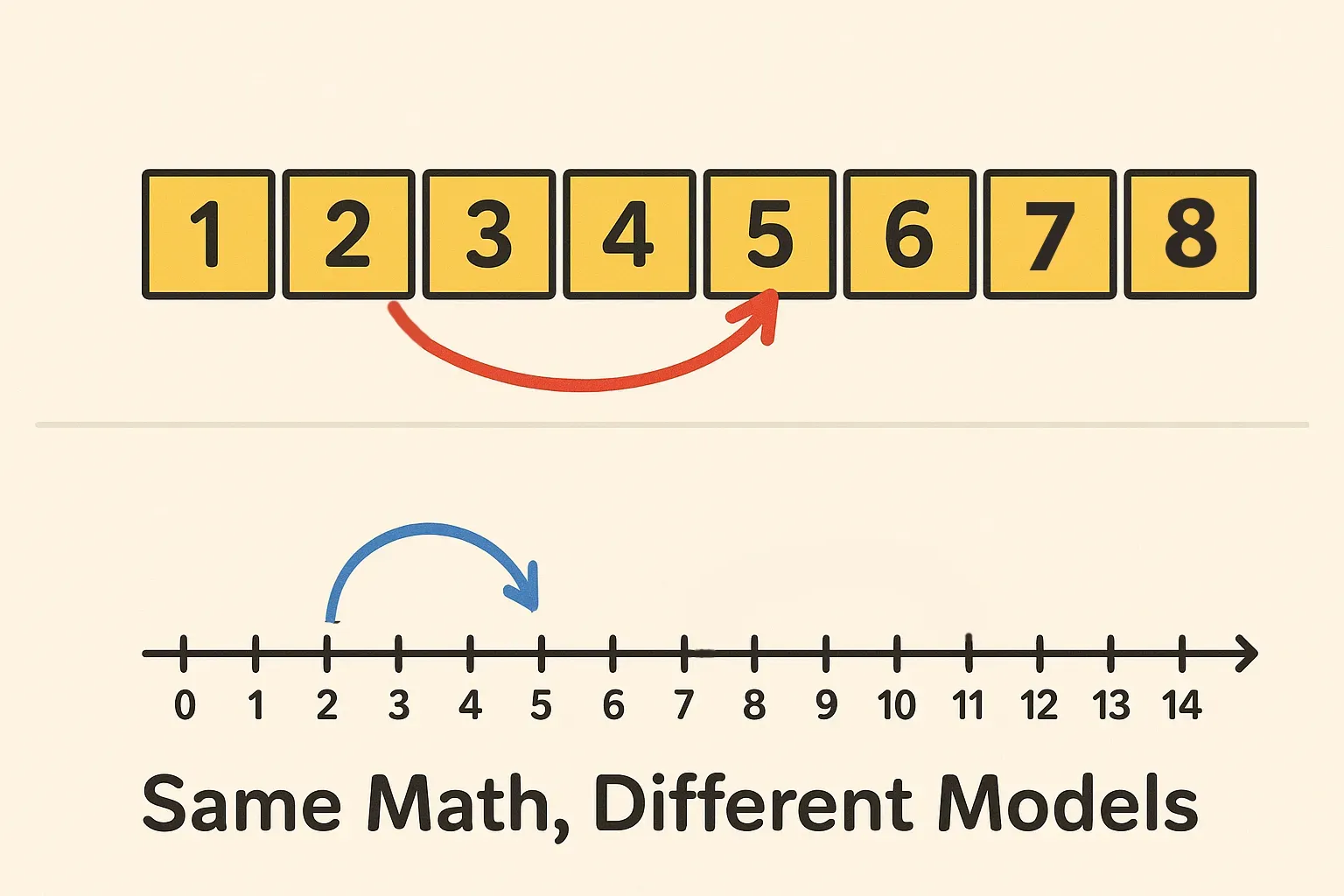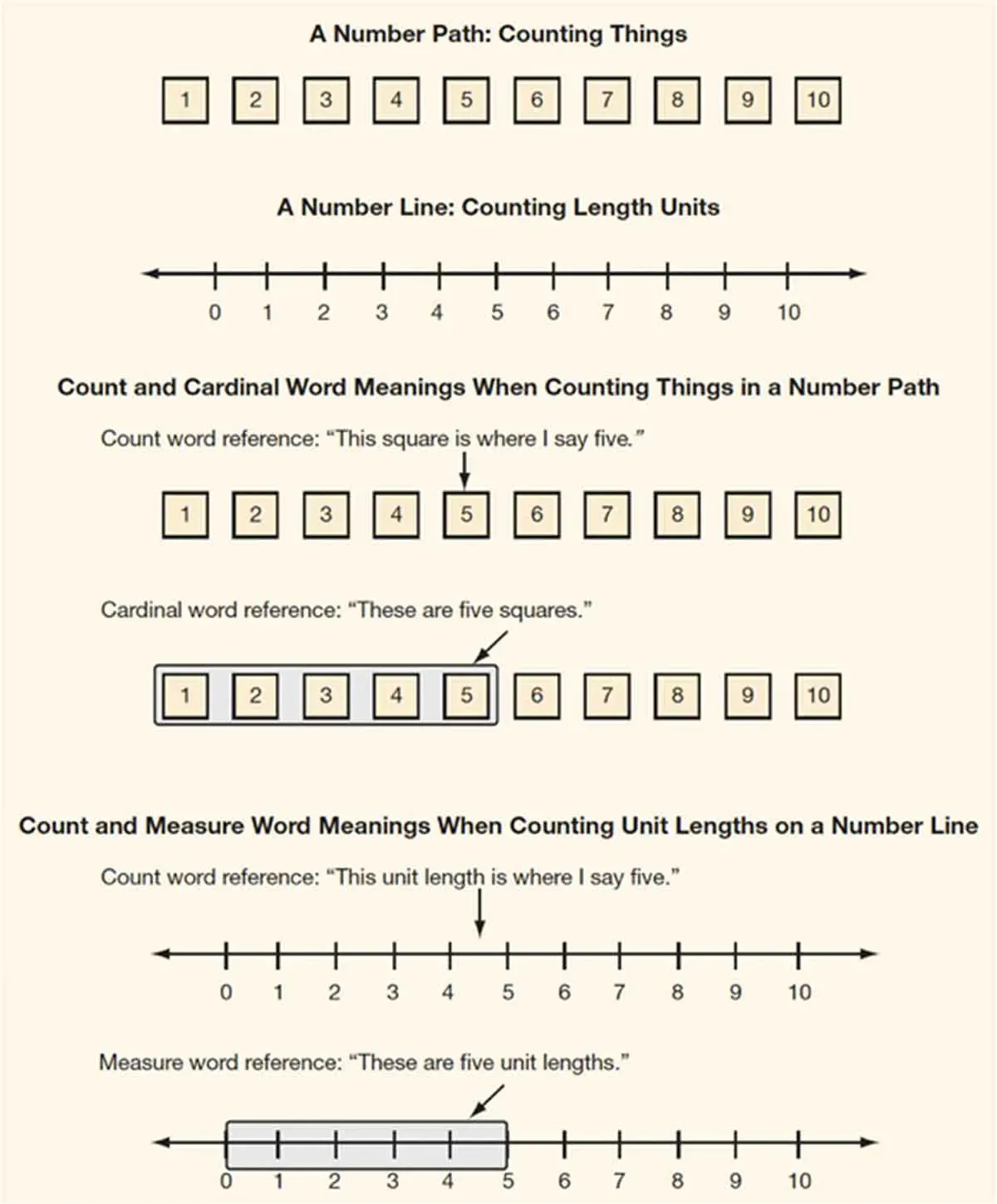Number Paths vs Number Lines – Which One For Your Child?
TL;DR: Both number paths and number lines are powerful visual tools for building a child’s number sense, but they suit different ages and stages of development. In early years (PreK, Kindergarten, 1st grade), a number path – a simple linear path of numbered steps – is easier for children to grasp for counting and basic addition. By around 2nd grade and up, children are ready for the more abstract number line, which represents numbers as distances from zero and opens the door to advanced concepts like place value, negative numbers, and fractions. The key is to start with the concrete (number paths) and transition to the abstract (number lines) when your child is developmentally ready, typically around age 7–8. This ensures a strong foundation in number relationships without confusion.
Walk into any elementary classroom, and you might see both numbered hopscotch-like charts and the classic horizontal number line. As a parent, you may wonder: What’s the difference between a number path and a number line, and which one should my child be using? Both tools are aimed at developing your child’s number sense – that intuitive feel for how numbers work and relate – but they’re designed for different levels of understanding. In this article, we’ll explore number paths vs. number lines, explain when each is most appropriate, and show how research-backed strategies can help your child become confident with numbers.
Number Path vs. Number Line: What’s the Difference?

Number Path: A number path is a simple visual counting model. Think of it as a path or ladder of consecutive whole numbers (1, 2, 3, …) laid out in order, often each number inside its own box or stepping stone. Children move along the path one step at a time. Importantly, a number path usually starts at 1 (it may not even include 0) and consists only of positive whole numbers. Each step on the path corresponds to a countable unit (for example, one box = one count). This makes it very concrete – children can touch or mark each step as they count.
Number Line: A number line is a more advanced visual model of numbers on a continuous line. It typically includes 0 (as the origin) and can extend in both directions to represent positive and negative numbers, as well as fractions and decimals. On a number line, numbers are placed at equal intervals along the line, and the value of a number is represented by its distance from zero. This makes the number line a measurement model – the spaces or intervals between numbers are what matter. However, it also makes number lines more abstract. Young children might see the labeled marks and mistakenly think they should count the marks rather than the intervals of space between them.
- Key difference: A number path shows numbers as discrete steps you count directly, while a number line shows numbers as positions on a continuous line where distance matters.
Why Young Children Benefit from Number Paths
For preschoolers, kindergartners, and even first graders, number paths are often the best starting point for developing early number sense. At these ages, children are still solidifying how counting works and what numbers mean. A number path provides a clear, concrete model of counting.
Research and educational experts have found that number lines can actually be confusing for very young learners. A common mistake is starting to count at “0” on a number line or counting the tick marks rather than the spaces, which leads to off-by-one errors. Experts recommend waiting until around 2nd grade to introduce open number lines.

(image reference: Fuson, 2019)
Number paths make early addition and subtraction easier. Because each move on a number path corresponds to “one more” or “one less,” children can literally see arithmetic in action. For example, to solve 5 + 2 on a number path, a child can start on 5 and take two steps forward (to 6, then 7) – landing on 7 which is the answer.
If your child struggles with basic arithmetic, playful math games like those in our low-prep math games guide can help reinforce these concepts in a hands-on way.
When (and Why) to Move on to Number Lines
By second grade (around 7-8 years old), most children are ready to take that step from the number path to the number line. This transition is an exciting milestone because the number line unlocks more advanced understanding.
Research shows that skill with number lines strongly predicts math achievement. Children who can accurately place numbers on a line tend to have better arithmetic and problem-solving skills [Zhu et al., 2017].
Number lines are also valuable for children with learning challenges when introduced at the right time. A 2024 study in Insights into Learning Disabilities highlights that visualizing math on a number line can help students with mild or moderate learning disabilities offload some of the cognitive load of problem-solving.
For children with ADHD or dyscalculia, you may want to combine number lines with multi-sensory activities. Our article on math fact fluency explains how visual models like number lines help build speed and understanding without relying on rote memorization.
Choosing the Right Tool for Your Child
Every child develops at their own pace, but the progression from number paths to number lines generally follows a common pattern:
- Preschool and Kindergarten: Stick with number paths.
- 1st Grade: Continue with number paths, start gently introducing number lines.
- 2nd Grade and up: Transition to number lines, including open number lines and skip-counting exercises.
FAQs
What is a number path in math?
A number path is a simple visual counting tool that shows numbers in order as distinct steps or boxes. It’s ideal for young children learning to count.
What is a number line used for?
A number line is a continuous visual representation of numbers, useful for arithmetic, fractions, and comparing magnitudes.
Why not use number lines in kindergarten?
Number lines are more abstract and can cause confusion in very young children. Experts recommend introducing them around 2nd grade.
How do I transition my child from a number path to a number line?
Start by overlaying a number path and number line to show the connection. Gradually replace paths with open number lines and encourage counting jumps.
References
- Fuson, K.C. (2019). Relating Math Words, Visual Images, and Math Symbols for Understanding and Competence. International Journal of Disability, Development and Education, 66(2), 121–131.
- Zhu, M. et al. (2017). Number Line Estimation Predicts Mathematical Skills. Frontiers in Psychology, 8:1576.
- Berman, T. & Hord, C. (2024). Visualizing Math: How Number Lines Can Empower Problem-Solving. Insights into Learning Disabilities, 21(1), 1–11.


Comments
Your comment has been submitted successfully!